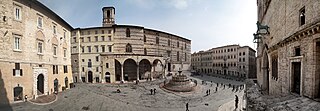
Perugia is the capital city of Umbria in central Italy, crossed by the River Tiber, and of the province of Perugia. The city is located about 164 km (102 mi) north of Rome and 148 km (92 mi) southeast of Florence. It covers a high hilltop and part of the valleys around the area. The region of Umbria is bordered by Tuscany, Lazio, and Marche.

Ascoli Piceno is a town and comune in the Marche region of Italy, capital of the province of the same name. Its population is around 46,000 but the urban area of the city has more than 93,000.

Formia is a city and comune in the province of Latina, on the Mediterranean coast of Lazio, Italy. It is located halfway between Rome and Naples, and lies on the Roman-era Appian Way. It has a population of 38,095.

Albino is a comune in the province of Bergamo, in Lombardy, northern Italy. It is located northeast of Bergamo and is situated in the valley of the river Serio.

Nocera Inferiore is a city and comune in Campania, Italy, in the province of Salerno, at the foot of Monte Albino, 20 km east-southeast of Naples by rail.

Lanciano is a town and comune in the province of Chieti, part of the Abruzzo region of central Italy. It has 36,304 inhabitants as of 2011. The town is known for the first recorded Catholic Eucharistic Miracle. Lanciano is located about 10 kilometres (6.2 mi) from the Adriatic Sea in an elevated spot.

Acqui Terme is a city and comune in the province of Alessandria, Piedmont, northern Italy. It is about 35 kilometres (22 mi) south-southwest of Alessandria. It is one of the principal winemaking communes of the Italian DOCG wine Brachetto d'Acqui.
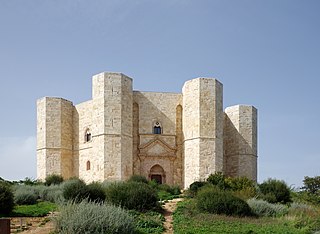
Andria is a city and comune in Apulia. It is an agricultural and service center, producing wine, olives and almonds. It is the fourth-largest municipality in the Apulia region and the largest municipality of the Province of Barletta-Andria-Trani. It is known for the 13th-century Castel del Monte.
Sant'Egidio may refer to:

Venafro is a comune in the province of Isernia, region of Molise, Italy. It has a population of 11,079, having expanded quickly in the post-war period.

Pagani is a town and comune in Campania, Italy, administratively part of the Province of Salerno, in the region known as the Agro Nocerino Sarnese. Pagani has a population of 35,834, as of 2016.

Capannori is an Italian town and comune in the province of Lucca, in northern Tuscany.

Civitella Casanova is an Italian town of inland mountain of 1,950 inhabitants in the province of Pescara in Abruzzo and belongs to the mountain community Vestina. Listed on the National Park of Gran Sasso and Monti della Laga and the Regional Reserve Voltigno and Valle d'Angri, a regional reserve included in the National Park, the country bases its economy mainly on agriculture. It has pre-Roman origins of repute, the sources of the historian Livy emerges as the town of Civitella was called Cutina or Cingilia.

Corbara is a town and comune in the province of Salerno in the Campania region of south-western Italy.
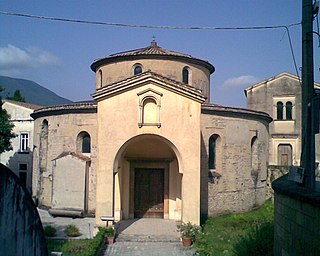
Nocera Superiore is a town and comune in the province of Salerno in the Campania region of south-western Italy.
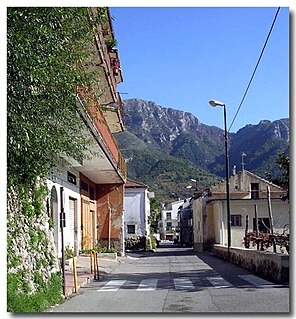
Tramonti is a town and comune in the province of Salerno in the Campania region of south-western Italy. It is located in the territory of the Amalfi Coast.
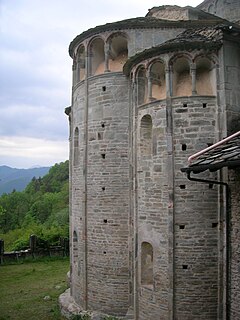
Villar San Costanzo is a comune (municipality) in the Province of Cuneo in the Italian region Piedmont, located about 70 kilometres (43 mi) southwest of Turin and about 15 kilometres (9 mi) northwest of Cuneo. As of 31 August 2007, it had a population of 1,474 and an area of 19.5 square kilometres (7.5 sq mi).

Aniello Califano was an Italian poet and writer. He was the author of numerous Neapolitan songs, the music to which was composed by various Neapolitan composers. A number of his songs, especially "'O surdato 'nnammurato", remain popular today.
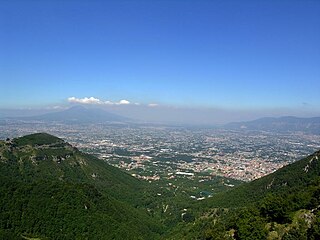
The Agro Nocerino Sarnese is a geographical region of the Province of Salerno, in Campania in southern Italy; the river Sarno flows through it. It is a low-lying area bounded to the south by the Monti Lattari, to the east and north-east by the Monti Picentini and to the west by the plain of Vesuvius. It consists of sixteen comuni: Angri, Bracigliano, Castel San Giorgio, Corbara, Nocera Inferiore, Nocera Superiore, Pagani, Roccapiemonte, San Marzano sul Sarno, San Valentino Torio, Santa Maria la Carità, Sant'Antonio Abate, Sant'Egidio del Monte Albino, Sarno, Scafati and Siano. All are in the province of Salerno except Santa Maria la Carità and Sant'Antonio Abate, which are in the province of Naples.

The strada statale 18 "Tirrena Inferiore" is an Italian state road, connecting Campania and Calabria. It is among the longest and most important state highways in southern Italy, considering that it follows the Tyrrhenian coast, from Salerno to Reggio di Calabria.
























